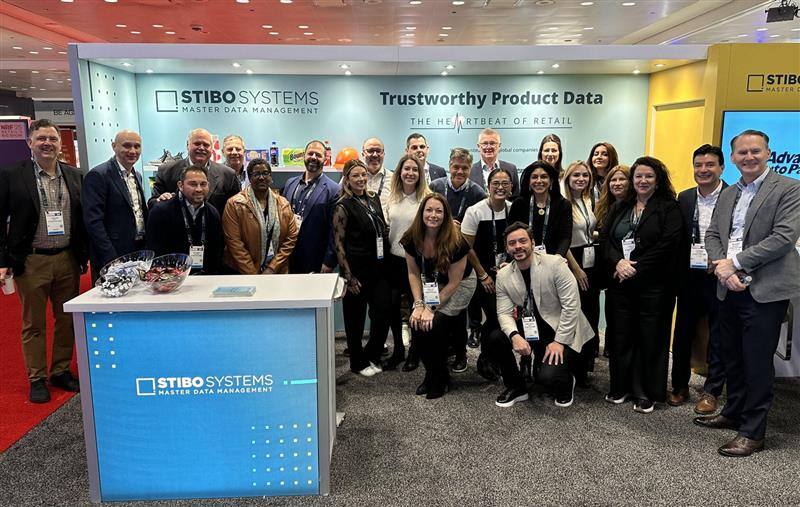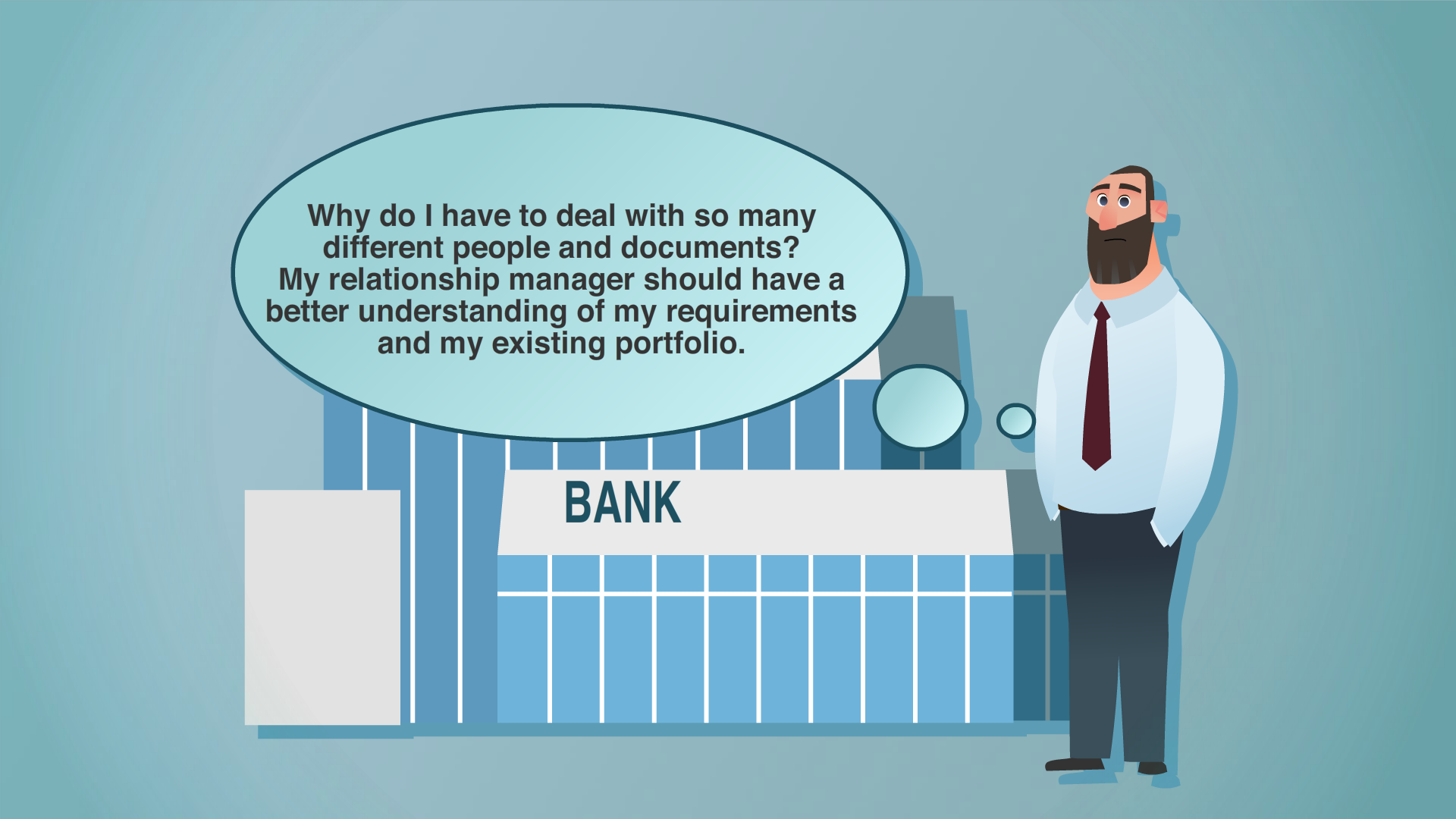Your back-end systems are only as reliable as the data flowing through them.
Most enterprise infrastructures struggle with inconsistent, duplicate and fragmented information across applications. Customer records exist in different formats between your CRM and billing systems. Product data varies between inventory management and e-commerce APIs.
And the hidden costs add up quickly:
- Development teams spend time on data cleanup instead of feature development
- Database performance degrades due to duplicate records
- System integrations fail when data formats don't align
All these data inconsistencies force your teams into constant firefighting mode. APIs return conflicting information. Compliance audits reveal governance gaps requiring expensive remediation.
Master data management solves this by creating a single, authoritative source for critical business data.
In this blog post, I will show you exactly how this works. So let us get to it.
Key takeaways:
- Backend performance directly correlates with data quality. Fragmented data across multiple sources creates compounding performance bottlenecks that burden your infrastructure over time.
- Master data management creates a single source of truth, eliminating custom data reconciliation scripts and freeing development teams to focus on business features. Database queries execute faster without complex JOIN operations. API response times improve with consistent data formats.
- Track specific KPIs to measure impact: query execution times, API response speeds, error rates, and development cycle duration. Establish baseline measurements before implementation to calculate ROI.
- Clean master data reduces technical debt, supports better system integrations, and provides the foundation for advanced analytics and AI initiatives across your backend infrastructure.
First, let us get the very basics straight:
What is master data management?
Master data management (MDM) is a technology discipline that creates a single, authoritative source for your organization's critical business data.
It is your central hub that defines how customer information, product details, employee records and other essential data gets structured and shared across your whole infrastructure.
MDM platforms don't replace your existing databases.
They sit between your operational systems and create reliable data foundations that all applications can trust.
Core components of an MDM platform
Data integration capabilities connect your MDM system to existing databases, applications and data sources.
These connectors pull information from CRM systems, ERP platforms, e-commerce databases and other operational systems without disrupting their normal operations.
Data quality engines clean and standardize the information flowing through your platform. They identify duplicate records, correct formatting inconsistencies and validate data against business rules you define.
Workflow and governance tools manage how data changes get approved and implemented across your systems. When someone updates a customer's address, these workflows determine who needs to approve the change and how it gets distributed to downstream applications.
Master data repositories store the golden records that serve as authoritative versions of your business entities.
APIs and integration services distribute clean, standardized data to all the applications that need it. Your CRM pulls customer information from the master record rather than maintaining its own potentially outdated version.

How MDM creates reliable data foundations
MDM transforms chaotic data environments into structured, governed ecosystems.
When your e-commerce platform needs product information, it retrieves data from the same authoritative source as your inventory management system and customer service applications.
The platform makes your data consistent through:
- Standardized data formats across all connected systems
- Automated synchronization that keeps information current
- Data validation rules that keep poor-quality information out of your systems
- Centralized governance that maintains data integrity over time
You avoid the data conflicts that currently slow down your operations.
Instead of multiple systems maintaining different versions of the same information, your entire infrastructure works from a single source of truth that stays accurate and up-to-date.
That was MDM at a general level. Now let us look at the magic that happens to your back-end systems, specifically.
Back-end problems that MDM solves
Enterprise back-end systems constantly struggle with data challenges that create operational inefficiencies and technical debt.
Then as your infrastructure grows, these problems compound. Eventually, you need significant engineering resources just to maintain basic functionality.
Data silos blocking system integration
Data silos develop when your applications store information independently without sharing it effectively across the infrastructure.
- Your customer service platform maintains its own customer records that don't sync with your billing system or e-commerce database
- Marketing automation tools work from outdated contact lists because they can't access real-time customer updates from your CRM
- Product information varies between your inventory management system and online catalog
With this isolation, you can’t build integrated solutions that use data across multiple systems. So, your development teams get bogged down creating custom connectors between applications.
Performance issues from duplicate data
The problems with duplicate records grow exponentially as your databases scale.
When the same customer exists as multiple entries across your systems, every query processes redundant information and attempts to reconcile conflicting details.
Database indexes become inefficient when they have several versions of identical entities.
Your system performance degrades all around.
- Slower query execution times as databases sort through duplicate records
- API response delays from processing conflicting information
- More memory usage during data reconciliation operations
- Database bloat that affects overall system responsiveness
Bottlenecks like this cascade through your whole infrastructure during peak usage periods.
Complex application integrations
Every new system integration becomes a data translation project when your existing applications use incompatible formats and structures.
Your marketing platform expects customer data in specific JSON formats, but your legacy systems export information using completely different field names and data types.
To build these data bridges, you need custom middleware that maps fields, transforms formats and handles edge cases. It takes weeks or months to make these integrations, as your engineering teams develop more and more complex transformation logic.
Gaps in data governance and compliance
Regulatory compliance becomes extremely hard when customer data exists in different formats across multiple systems with varying security controls.
To execute a GDPR data deletion request, you need to locate personal information in every connected application. But inconsistent customer identifiers make this process nearly impossible to automate.
During financial audits, you find serious discrepancies between systems that should contain identical business data but report different values.
Inconsistencies like these lead to compliance vulnerabilities that the auditors may flag as control weaknesses.
Manual data maintenance overhead
Your development teams waste significant time on data cleanup tasks that should be automated.
Engineers regularly write scripts to synchronize customer records between systems, fix data quality issues and respond to support tickets caused by conflicting information across applications.
All these manual processes eat up serious resources:
- Weekly data reconciliation scripts between disconnected systems
- Support ticket investigations when applications display different information
- Database cleanup procedures to remove duplicates and fix formatting issues
- Custom data transformation code for each new system integration
This is not scalable. Eventually, you need dedicated teams just to keep data consistent across your back-end infrastructure.
See how Essendant reduced manual data reconciliation and improved operational efficiency with MDM.
| Problem Area | Without MDM | With MDM |
| Data silos blocking system integration | Applications store isolated data; no unified view. Custom connectors are needed for basic integration. | All systems share a common, authoritative data source. MDM enables seamless integration across platforms. |
| Performance issues from duplicate data | Duplicate records degrade query performance, cause API delays, and bloat databases. | MDM eliminates duplicates at the source, improving query speed, API response, and reducing memory and storage usage. |
| Complex application integrations | Incompatible data formats force custom middleware and transformation logic, leading to long integration cycles. | Standardized master data and APIs simplify integration. Pre-built connectors reduce time and effort to onboard new systems. |
| Gaps in data governance and compliance | Inconsistent data across systems makes regulatory compliance difficult. GDPR and audit processes are manual and error-prone. | Centralized governance ensures accurate, standardized data. Compliance processes are faster, more reliable, and easier to automate. |
| Manual data maintenance overhead | Engineers constantly write scripts to reconcile data and resolve errors. High operational costs and dev time wasted on non-product tasks. | MDM automates synchronization and validation, freeing teams to focus on feature development instead of firefighting data quality issues. |
How MDM transforms your back-end infrastructure
Instead of managing scattered data across isolated applications, MDM gives you a unified architecture that supports reliable, scalable operations.
Centralized data governance reduces system errors
You have a single point of control for data quality, validation and distribution across your whole infrastructure.
An example:
When customer information gets updated in one system, the MDM platform validates the changes against your business rules and automatically propagates accurate data to all connected applications.
You eliminate the data conflicts that today cause system errors and application failures. Such as:
- Standardized validation rules keeping poor-quality data out of all systems
- Automated data quality checks that catch errors before they propagate
- Consistent data formats across all connected applications
Your development teams no longer need to build custom validation logic into every application. The MDM platform handles data quality at the infrastructure level.
Automated data synchronization across applications
The MDM platform keeps your data consistent – in real-time – across your back-end systems. And you don’t need manual intervention or custom synchronization scripts.
An example:
When a customer updates their address through your mobile app, that change automatically flows to your billing system, shipping platform and customer service database. The synchronization happens through standardized APIs that distribute master data to all connected systems.
You eliminate:
- Manual data entry across multiple systems
- Time delays between system updates
- Data inconsistencies from failed synchronization processes
- Custom integration code for each system-to-system connection
- Weekly reconciliation scripts that consume development time
That automation, in turn, reduces the operational overhead of maintaining data consistency as your infrastructure scales with business growth.
Discover how Danfoss achieved real-time data consistency across global systems using MDM.

Better API performance through clean data sets
With clean, standardized data from your MDM platform, you will see a dramatic improvement to API response times and reliability.
Your APIs no longer need to process duplicate records, reconcile conflicting information or handle data format inconsistencies during runtime operations.
Database queries execute faster because they work with deduplicated, properly indexed master data. So, you will have:
- Faster query execution times from cleaner database indexes
- Less memory used during data processing operations
Your performance gains will be greater the more data you have, with your systems handling every greater transaction loads.
Now that we have looked at how MDM transforms your back-end at a more general level, let us take more of a technical look.
Technical implementation benefits
MDM platforms improve your back-end infrastructure through better data handling and simpler system architectures. These technical benefits then compound over time as your data volumes grow, and your system becomes more complex.
Reduced database query complexity and execution time
MDM eliminates any complex JOINs and data reconciliation logic that slow down your database operations.
Instead of writing queries that search across multiple tables to find the correct version of a customer record, your applications get clean master data through simple, direct lookups.
Databases perform far better when you remove duplicate records and standardize data formats. Your database administrators spend less time tuning performance issues caused by poor data quality.
We are talking:
- Simplified SQL queries that execute faster
- Reduced database load from eliminated duplicate processing
- Better index performance on deduplicated data sets
Better error handling through standardized data validation
When you standardize data validation at the MDM level, errors will no longer propagate through your whole system architecture.
When invalid data gets caught and corrected at the master data layer, downstream applications get clean information that meets your business rules and format requirements. Application crashes from malformed data become rare occurrences instead of daily firefighting exercises.
It is also far easier to handle exceptions in your application code, because the data flowing through the systems maintains consistent quality standards.
Simplified third-party integrations
MDM platforms have standardized APIs that make connecting new applications a lot easier. Instead of building custom data transformation logic for each integration, third-party systems can connect directly to your master data APIs and receive information in consistent, well-documented formats.
New system integrations that previously took months can often be completed in weeks.
- Standardized API endpoints for common business entities
- Consistent data formats means you need less transformation
- Pre-built connectors for popular enterprise apps
- Less custom code maintenance for system integrations
- Faster onboarding of new business applications
- Less debugging time for data format mismatches
It means your development teams can focus on building business functionality instead of managing data translation between incompatible systems.
Learn how Thule Group accelerated third-party integrations with a unified data platform.
How to measure MDM’s effect on your back-end
You need concrete metrics. And since we are talking about large, complex systems landscapes, allow me to lay out for you the KPIs that matter here.
Query execution time – it will be shorter without the need for data reconciliation or handling duplicate records.
API response time – they will be faster when you have consistent data formats, and don’t need as much transformation logic.
Database CPU utilization – it goes down as you avoid redundant queries and there is no need for data validation and cleansing.
Error rates for data validation – these will drop when applications work with standardized, pre-validated master data instead of inconsistent source systems.
Duplicate record detection rates – these will go up when you have centralized data governance rules and automated matching algorithms.
Schema compliance percentages – compliance improves since MDM enforces consistent data structures and validation rules.
Development cycle time – they will shorten when your developers work with predictable data models instead of custom reconciliation logic.
Storage utilization – you need a lot less storage as you get rid of duplicates and redundancy (because of the standardized formats).

Remember to establish baselines
Document your current system performance before implementing an MDM solution. Capture baseline metrics during typical usage periods, including peak load scenarios.
You will need this to calculate return on investment and track improvements over time.
Conclusion
Your back-end system performance depends entirely on data quality and consistency across your infrastructure.
When applications work with fragmented, duplicate records, database queries slow down and API responses become unreliable.
MDM solves these back-end data problems at the source.
Your development teams stop writing custom data reconciliation scripts. Database administrators spend less time troubleshooting performance issues caused by duplicate records. System integrations become straightforward when all applications access the same standardized data formats.
The technical benefits multiply as your data volumes grow:
- Query execution times improve without complex JOIN operations
- API response speeds increase with consistent data structures
- Database storage requirements decrease through duplicate elimination
- Development cycles accelerate when working with clean master data
- System integration projects complete faster with standardized APIs
When you implement MDM, you build a sustainable foundation that makes your back-end scalable and your data governance reliable in your entire infrastructure.
Frequently asked questions
How long does it take to see performance improvements after implementing MDM?
Database query improvements typically appear within weeks of implementation as duplicate records are eliminated. API response time improvements follow shortly after as applications begin accessing clean master data.
Full development cycle improvements usually manifest over 2-3 months as teams adapt to working with standardized data formats.
What's the difference between MDM and a data warehouse for backend performance?
Data warehouses optimize for analytical queries and reporting, while MDM focuses on operational data consistency across your live systems. MDM improves real-time application performance by providing clean data at the source, whereas data warehouses handle historical analysis and business intelligence.
How do you handle system integration during MDM implementation?
Most MDM platforms support parallel operation with existing systems during implementation. You can gradually migrate data sources while maintaining current integrations.
API endpoints and database connections typically require minimal changes since MDM acts as an intermediary layer.
What happens to existing custom data transformation code after MDM deployment?
Existing transformation scripts can often be retired gradually as MDM handles data standardization centrally.
You maintain legacy code during transition periods and phase it out as confidence in the MDM system grows. Over time, this reduces maintenance overhead.
How does MDM affect database backup and disaster recovery procedures?
MDM simplifies backup strategies by centralizing critical data governance. You need fewer backup procedures since duplicate data is eliminated.
Disaster recovery becomes more straightforward with a single source of truth, though you should coordinate MDM backup schedules with connected systems.
Can MDM improve performance for read-heavy applications?
Yes, MDM significantly benefits read-heavy applications by eliminating complex query logic needed to reconcile data from multiple sources. Applications can use simple, direct queries against clean master data instead of expensive JOIN operations across fragmented tables.
What database types work best with MDM solutions?
Most modern MDM platforms support relational databases (PostgreSQL, MySQL, SQL Server), NoSQL databases (MongoDB, Cassandra), and cloud databases (Amazon RDS, Azure SQL).
The choice depends on your existing infrastructure and scalability requirements rather than MDM compatibility.
Find the Right MDM Partner: Download Your RFP Guide
Ready to take the next step in your MDM journey? Whether you're kicking off a vendor evaluation or formalizing requirements, our practical guide will help you write a strong, clear RFP for MDM.






































































































































































































